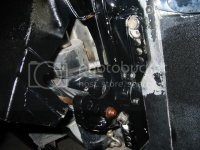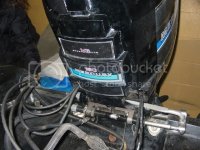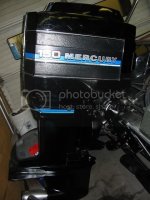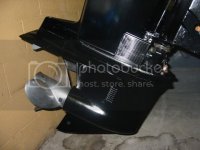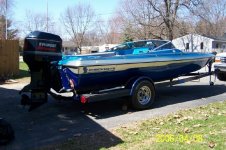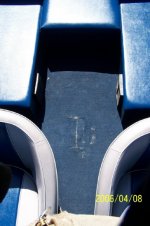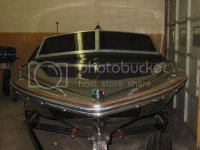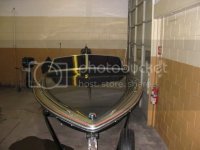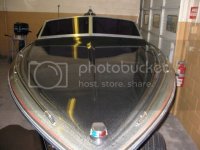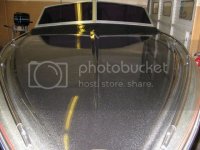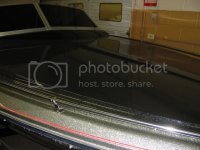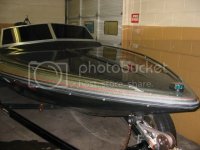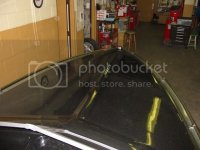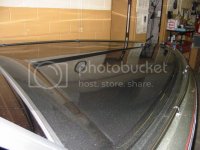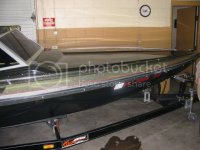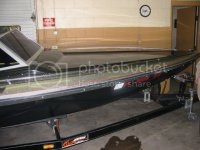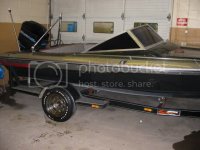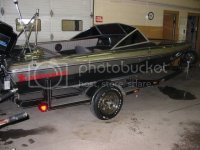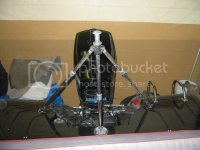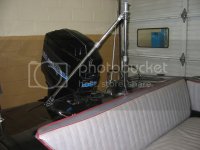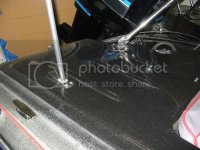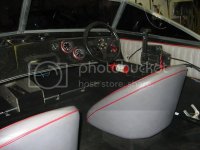-
Welcome to the Checkmate Community Forums forums.
» Interact with over 10,000 Checkmate Fanatics from around the world!
You are currently viewing our boards as a guest which gives you limited access to view most discussions, articles and access to our other FREE features.
By joining our free community you will be able to:
» Post topics and messages
» Post and view photos
» Communicate privately with other members
» Access our extensive gallery of old Checkmate brochures located in our Media Gallery
» Browse the various pictures in our Checkmate photo gallery
Registration is fast, simple and absolutely free so please, join our community today!
If you have any problems with the registration process or your account login, please contact support by clicking here or by using the"contact us" link at the bottom of the page.
You are using an out of date browser. It may not display this or other websites correctly.
You should upgrade or use an alternative browser.
You should upgrade or use an alternative browser.
New member here and need help with boat purchase
- Thread starter Bob Dobbs
- Start date
cooperider
Well-known member
Its had enough UV damage that it looks like its going to need recleared.
I'm not saying don't buy it, I'm just preparing you for the fact that it will return. If you keep up with it like you say it will take a while longer, than what I am thinking. They did a real nice job with the buffing BTW. I do also like the motor better on that one than the ones on the others.
I thought that was a Turbo prop. I have one of those myself 24", yes there are $2,000 props. But usually they are on much bigger boats. The guy on here that could give you some good prop info it boatman4021.
I'm not saying don't buy it, I'm just preparing you for the fact that it will return. If you keep up with it like you say it will take a while longer, than what I am thinking. They did a real nice job with the buffing BTW. I do also like the motor better on that one than the ones on the others.
I thought that was a Turbo prop. I have one of those myself 24", yes there are $2,000 props. But usually they are on much bigger boats. The guy on here that could give you some good prop info it boatman4021.
I really wanted a blue metal flaked Checkmate, but the black metal flake is growing on me. The one thing I didn't like about the blue boat is that the bottom is dark blue vs the light blue on top. I would really like the same color top and bottom, but it is still a nice boat. I don't care for the redone seats and the boat is going to need new carpet. This boat as well as the 79 has a nice trailer and I know this boat is kept in storage indoors as well. I guess the motor alone is worth the $5,000? Is the Vindicator a good motor? What about the OMC controls?
Attachments
Chris E
Well-known member
buy boat #2 in my opinion, looks nice, the engine looks ok. colour looks nice. take the boat to a mechanic and have him do a compression test and check the lower unit before you make any decisions. its hard to help you make a decision without seeing the boat in person but that boat does look sharp and it appears to be looked after. its hard but try and keep the emotion out of the decsion, and buy based on the value of what you feel the boat is worth.
Hi Bob,
First off, thanks for supporting the board and good luck with your search.
A couple of comments.
If you're new to boating, you might want to work your way up to running at 80 MPH. That's real quick on the water. And it's trickier to drive at 80 in a small boat, versus a larger boat. To do it in a large boat, you need big outboard power.
You asked a few questions, which I didn't really see get answered, or perhaps I missed the answers, anyhoo.
Some Checkmates have what they call a pad. The simple explanation of what it is, is this. It's a flat pad that is located on the very bottom of the hull. If you look at the back of a boat and the very bottom of the V is actually flat and it extends out each way from the center, that is a pad. Pad boats tend to run faster. And the wider the pad is, usually the faster the boat will run and wider is sometimes a bit easier to drive. More or less what a pad does, is allow the boat to get up and run on just the pad at speed. So the hull is less restricted and runs faster. IF the pad gets too wide though, it can effect the ride quality, so like most things in life, it's a bit of a balancing act. Many of us would like to see Checkmate widen the pads on their boats a bit, so they would run even faster. And some members have modified their boats so they have wider pads.
I think that's why a few members latched on to the boat that you said had a widened pad.
On the black boat that you looked at that needed to be buffed out. Buffing and waxing fibreglass will no doubt make it look better. But if the gel on the deck has seen better days, what will tend to happen is that wax will make it look all shiny and new, and then as soon as the wax burns off, you'll be back to the dull deck you had before. The boat will more or less look as good for as long as your wax holds up. That's why a few members mentioned the black boat might need to have the deck shot with clear. Meaning, it be sprayed with a clear coat to make it look better, and better longer.
I have one suggestion for you.
Before you hand over your money on any boat. Get a good inspector to look it over. Many boats that are older can look great but need work that isn't so apparant unless you know what you're looking for. One good reason is this. Wood is used in the building of fibreglass boats, it's used for the floor, stringers and transom to mention just a few places, and wood can begin to rot. A proper marine inspector should be able to find any trouble spots before you purchase.
Same deal on the motor. Motors can run great and have zero compression. Some of the smoothest running motors can run smooth as silk, but make very little power. I've seen that here time after time. We've had a number of threads where a member can't figure out why his or her boat is slower than the average, and when a compression test is done, the true story is told.
So at minimum, you want a compression test on the motor.
At the end of the day, whatever you buy will eventually break. That's just part of the hobby. You break 'em-fix 'em and then break 'em again.
But it is nice, to at least get a few good rides before you dole out some more cash.
Good luck with your search!
-Chris
First off, thanks for supporting the board and good luck with your search.
A couple of comments.
If you're new to boating, you might want to work your way up to running at 80 MPH. That's real quick on the water. And it's trickier to drive at 80 in a small boat, versus a larger boat. To do it in a large boat, you need big outboard power.
You asked a few questions, which I didn't really see get answered, or perhaps I missed the answers, anyhoo.
Some Checkmates have what they call a pad. The simple explanation of what it is, is this. It's a flat pad that is located on the very bottom of the hull. If you look at the back of a boat and the very bottom of the V is actually flat and it extends out each way from the center, that is a pad. Pad boats tend to run faster. And the wider the pad is, usually the faster the boat will run and wider is sometimes a bit easier to drive. More or less what a pad does, is allow the boat to get up and run on just the pad at speed. So the hull is less restricted and runs faster. IF the pad gets too wide though, it can effect the ride quality, so like most things in life, it's a bit of a balancing act. Many of us would like to see Checkmate widen the pads on their boats a bit, so they would run even faster. And some members have modified their boats so they have wider pads.
I think that's why a few members latched on to the boat that you said had a widened pad.
On the black boat that you looked at that needed to be buffed out. Buffing and waxing fibreglass will no doubt make it look better. But if the gel on the deck has seen better days, what will tend to happen is that wax will make it look all shiny and new, and then as soon as the wax burns off, you'll be back to the dull deck you had before. The boat will more or less look as good for as long as your wax holds up. That's why a few members mentioned the black boat might need to have the deck shot with clear. Meaning, it be sprayed with a clear coat to make it look better, and better longer.
I have one suggestion for you.
Before you hand over your money on any boat. Get a good inspector to look it over. Many boats that are older can look great but need work that isn't so apparant unless you know what you're looking for. One good reason is this. Wood is used in the building of fibreglass boats, it's used for the floor, stringers and transom to mention just a few places, and wood can begin to rot. A proper marine inspector should be able to find any trouble spots before you purchase.
Same deal on the motor. Motors can run great and have zero compression. Some of the smoothest running motors can run smooth as silk, but make very little power. I've seen that here time after time. We've had a number of threads where a member can't figure out why his or her boat is slower than the average, and when a compression test is done, the true story is told.
So at minimum, you want a compression test on the motor.
At the end of the day, whatever you buy will eventually break. That's just part of the hobby. You break 'em-fix 'em and then break 'em again.
But it is nice, to at least get a few good rides before you dole out some more cash.
Good luck with your search!
-Chris
Chris,
Thank you for taking the time to help answer some of the questions I had about a new boat purchase. This is why I am more than happy to help support this sight. Getting good advice is very important when you are going to spend some big cash.
I have always wanted a Checkmate boat ever since I was a kid. I have spent many weekends hanging out at my uncle's cottage that was on a lake. My uncle had a 79' Baja 16' foot with an 115hp Merc. The boat was metal flake blue and silver, looked a lot like a Checkmate. Since the day he got this boat, I always thought these were the coolest looking boats along with the Checkmates. I have seen many of the old Checkmates back in the day, and always wanted one or a BAJA. My uncle sold his Baja several years ago to buy a bigger family boat. The boat was mint, almost like bran new when he sold it and he only sold it for $3,000. That person got a great deal! I wanted to buy the boat, but of course I did not have the money back then and the boat had to go. I now have the money, and I am having a hard time trying to find a nice old checkmate or even an old BAJA. I want an old Checkmate with the metal flake paint because that's what I grew up around. I don't mind overpaying if I have to. It's hard to find what you’re looking for, so if you want something you are going to pay for it. There are so many times in my life that I wanted something and I passed it up and said that I will go get it later or shop around to find something better. Well, what I have learned in life is that not to pass up things or you may be sorry later that you didn’t just do it!
Regarding the boats, I really wanted a blue and silver metal flake boat, but after seeing the black and silver metal flake, I think I like this color combination better. It was faded bad, but the dealer did a great job buffing it out. Hopefully, I can maintain this shine. I just went and looked at the black and silver boat again this weekend, and the dealer did a lot to it to make me want to buy it. He detailed the whole boat from top to bottom including the motor. He has all the gauges, lights, and everything working on the boat. He went through the trailer and installed new bearings in the wheels. The trailer on this boat is a very good trailer from what I can tell. I have seen some other boats sitting on some pretty bad trailers. On the motor, the trim is not working, but he is going to fix that, and is going to install a new water pump. I am not sure if he has done a compression check, but I will make sure that is done before I decide to buy. I did give him a down payment to hold the boat. The owner is a very nice guy and promises to stand by what he sells. He does not even recommend me taking the boat now until the beginning of spring until he can get me in the boat to test drive it on the river. He wants his customer's to be completely satisfied before making a boat purchase from him. I feel safer buying from him verse a private owner if he going to stand by what he sells. In regards to the paint, I will take my chance on maintaining it to try and keep it looking the way it does now. I have a friend that use to buff boats for a living, and I could always get him to cut me a deal and keep this up. Maybe, if I have to, I will consider a clear coat if needs to be. Regarding the motor on this boat, I plan on upgrading it later on, so I am already planning on putting more money into it. I may put more money into the boat then what it is worth, but at least I will have what I always wanted.
Regarding the blue boat, I will have to wait another 2 months until the seller gets it out of storage. I then will have to drive about 4 hours to go see it. No fun waiting, and may not be that much better then the black one.
I am going to continue to shop around for used Checkmates even if I buy the black one. I am not passing this opportunity up to get something I always wanted with the question oh maybe I find a nicer one later on if I keep looking. I may be looking for a long time! If I find something even nicer, then maybe I'll buy that and then sell the old one. Money is a lot easier for me these days, so I can do things like this now.
I really appreciate everyone's input and thanks to all that read this post and gives input. I have more pictures of the black boat that I personally took this weekend and will post them here soon.
-Bob
Thank you for taking the time to help answer some of the questions I had about a new boat purchase. This is why I am more than happy to help support this sight. Getting good advice is very important when you are going to spend some big cash.
I have always wanted a Checkmate boat ever since I was a kid. I have spent many weekends hanging out at my uncle's cottage that was on a lake. My uncle had a 79' Baja 16' foot with an 115hp Merc. The boat was metal flake blue and silver, looked a lot like a Checkmate. Since the day he got this boat, I always thought these were the coolest looking boats along with the Checkmates. I have seen many of the old Checkmates back in the day, and always wanted one or a BAJA. My uncle sold his Baja several years ago to buy a bigger family boat. The boat was mint, almost like bran new when he sold it and he only sold it for $3,000. That person got a great deal! I wanted to buy the boat, but of course I did not have the money back then and the boat had to go. I now have the money, and I am having a hard time trying to find a nice old checkmate or even an old BAJA. I want an old Checkmate with the metal flake paint because that's what I grew up around. I don't mind overpaying if I have to. It's hard to find what you’re looking for, so if you want something you are going to pay for it. There are so many times in my life that I wanted something and I passed it up and said that I will go get it later or shop around to find something better. Well, what I have learned in life is that not to pass up things or you may be sorry later that you didn’t just do it!
Regarding the boats, I really wanted a blue and silver metal flake boat, but after seeing the black and silver metal flake, I think I like this color combination better. It was faded bad, but the dealer did a great job buffing it out. Hopefully, I can maintain this shine. I just went and looked at the black and silver boat again this weekend, and the dealer did a lot to it to make me want to buy it. He detailed the whole boat from top to bottom including the motor. He has all the gauges, lights, and everything working on the boat. He went through the trailer and installed new bearings in the wheels. The trailer on this boat is a very good trailer from what I can tell. I have seen some other boats sitting on some pretty bad trailers. On the motor, the trim is not working, but he is going to fix that, and is going to install a new water pump. I am not sure if he has done a compression check, but I will make sure that is done before I decide to buy. I did give him a down payment to hold the boat. The owner is a very nice guy and promises to stand by what he sells. He does not even recommend me taking the boat now until the beginning of spring until he can get me in the boat to test drive it on the river. He wants his customer's to be completely satisfied before making a boat purchase from him. I feel safer buying from him verse a private owner if he going to stand by what he sells. In regards to the paint, I will take my chance on maintaining it to try and keep it looking the way it does now. I have a friend that use to buff boats for a living, and I could always get him to cut me a deal and keep this up. Maybe, if I have to, I will consider a clear coat if needs to be. Regarding the motor on this boat, I plan on upgrading it later on, so I am already planning on putting more money into it. I may put more money into the boat then what it is worth, but at least I will have what I always wanted.
Regarding the blue boat, I will have to wait another 2 months until the seller gets it out of storage. I then will have to drive about 4 hours to go see it. No fun waiting, and may not be that much better then the black one.
I am going to continue to shop around for used Checkmates even if I buy the black one. I am not passing this opportunity up to get something I always wanted with the question oh maybe I find a nicer one later on if I keep looking. I may be looking for a long time! If I find something even nicer, then maybe I'll buy that and then sell the old one. Money is a lot easier for me these days, so I can do things like this now.
I really appreciate everyone's input and thanks to all that read this post and gives input. I have more pictures of the black boat that I personally took this weekend and will post them here soon.
-Bob
Bob,
I'm not sure if you're aware, but some of the early Bajas were built using old Checkmate moulds. You mentioned your uncle's boat looked a lot like a Checkmate, it might be one of the ones built using Check moulds.
If you do a search of the forums, you should be able to find some old threads about the Baja-Checkmate connection.
I'm not sure if you're aware, but some of the early Bajas were built using old Checkmate moulds. You mentioned your uncle's boat looked a lot like a Checkmate, it might be one of the ones built using Check moulds.
If you do a search of the forums, you should be able to find some old threads about the Baja-Checkmate connection.
Ill chime in one last time here. I think id be looking more at motors then colors, I had very nice marlin a few years ago that was absolutely beutifull,looked great under the carport on a hot summer day while I shopped for a used motr during the summer.Once spring comes the prices of used motor will sky rocket I wouldnt even bother with the black boat anymore untill I got compression numbers, personaly Id be there while he did the test. Im kinda surprised being a boatshop that he hadnt all ready done that. He fixed the guages buffed the boat(those two things can take a considerable amount of time and or days) but hasnt done a compression test that only takes a few minutes,just doesnt make much sence to me .Dont want to come off as a jerk in anyway here ,I like everyone else are looking forward to seeing pictures of you and your boat on the water. Not sure if your married or what but I will say women tend to get frustrated a bit when its hot and the preety boats sitting in the driveway(IM TALKING FROM EXPERIENCE HERE), I would go down watch the compression test and post the results for us to look at.And well help in any way we can. Good luck Aaron
.Dont want to come off as a jerk in anyway here ,I like everyone else are looking forward to seeing pictures of you and your boat on the water. Not sure if your married or what but I will say women tend to get frustrated a bit when its hot and the preety boats sitting in the driveway(IM TALKING FROM EXPERIENCE HERE), I would go down watch the compression test and post the results for us to look at.And well help in any way we can. Good luck Aaron
I'm not 100% sure that he did not already do a compression test. I just never asked. If I am to guess, I bet he did, because he took the boat in as a trade in to sell a new boat. Do you think he would actually take a boat in with bad compression on a motor and then try to sell it? If it was me, I wouldn't even want the boat with a bad motor. My guess is that if it did have bad compression, he wouldn't even want the boat either. He seems like the kind of guy that is not even in a hurry to make a quick sale. In fact, he doesn't even want me to take the boat until I can test drive it! Now that's someone that's not in no hurry to sell or get my money. I do agree the boat is overpriced, but I am willing to pay more then it's worth just so that I can finally have my Checkmate. There does not seem to be a whole bunch of Checkmates for sale in Chicago. In fact, none right now. I am suppose to go back around the first week of April to do the test drive. I am going to take my friend that knows some about outboards and I will make sure I see the compression test right in front of me. I'm going nuts right now trying to find a Checkmate for $5,000 or less that is close to home. It sucks when you got the cash and you can't even spend it!!!


Sounds like a rare find in a dealer. Wow customer service and support still exists. Nice.
If the motor checks out, and all the wood is solid, and the test drive is good I say go for it.
As you can see we are trying to help. Most of what we have learned is from bad things.
My boat is a prime example. It spent 2 years being stored in a hay barn. I jumped all over this boat. Could not find a soft spot anywhere. Jumped up and down on the motor and watched the transom. No movement. Trailer was in great shape. The motor was ran on the trailer (hose) seemed like it had a miss.(this was prior to me knowing about compression and leakage testing) I thought bad gas, it has been sitting for over a year. I was thinking carb rebuild. The guy was asking 4K, I towed it home for $3500.
Got the boat home and started to trouble shoot the motor. Pulled the plugs, found metal deposits on the #5 plug. Looked in with a light, then pulled the head. #5 piston had been run lean and was fried.
So off to find a re builder. Found a guy that did a great job, upgraded from a 2.0L 175 to the 2.4L 200+ that I have now. Price $2200
So Here it is June and the boat is getting in the water. $5700 Spent.
I ran the boat one summer. Had a great time until the water started seeping in everywhere. Seems that hay will suck the moisture out of wood. When I started using the boat, well, lets just say the boat went soft.
I could have just a transom, stringer, floor and that was the plan to start. Well I kind of missed that simple mark and went a bit overboard.
A ball park number for my total out lay is around 10K. Its a good thing I am attached to this boat, I could have bought a heck of a fast boat with way less than that.
Have fun with what ever boat you buy.
If the motor checks out, and all the wood is solid, and the test drive is good I say go for it.
As you can see we are trying to help. Most of what we have learned is from bad things.
My boat is a prime example. It spent 2 years being stored in a hay barn. I jumped all over this boat. Could not find a soft spot anywhere. Jumped up and down on the motor and watched the transom. No movement. Trailer was in great shape. The motor was ran on the trailer (hose) seemed like it had a miss.(this was prior to me knowing about compression and leakage testing) I thought bad gas, it has been sitting for over a year. I was thinking carb rebuild. The guy was asking 4K, I towed it home for $3500.
Got the boat home and started to trouble shoot the motor. Pulled the plugs, found metal deposits on the #5 plug. Looked in with a light, then pulled the head. #5 piston had been run lean and was fried.
So off to find a re builder. Found a guy that did a great job, upgraded from a 2.0L 175 to the 2.4L 200+ that I have now. Price $2200
So Here it is June and the boat is getting in the water. $5700 Spent.
I ran the boat one summer. Had a great time until the water started seeping in everywhere. Seems that hay will suck the moisture out of wood. When I started using the boat, well, lets just say the boat went soft.
I could have just a transom, stringer, floor and that was the plan to start. Well I kind of missed that simple mark and went a bit overboard.
A ball park number for my total out lay is around 10K. Its a good thing I am attached to this boat, I could have bought a heck of a fast boat with way less than that.
Have fun with what ever boat you buy.
81' is the way to GO!!!!
I know Black is a sharp color when it's new but blue is great.. My first Check that I looked at was Black but it only had a 115 Merc on it, Then I found the Eluder with a 200 Merc. It's a bow rider and I'am glad that it is due to more room for everything. If you are concered about the Motor on blackie have a compression test done--good luck in your decision.
I know Black is a sharp color when it's new but blue is great.. My first Check that I looked at was Black but it only had a 115 Merc on it, Then I found the Eluder with a 200 Merc. It's a bow rider and I'am glad that it is due to more room for everything. If you are concered about the Motor on blackie have a compression test done--good luck in your decision.
Congratulations. 
You should create a dedicated thread in the picture forum so you can document your Checkmate journey. You can upload the pics to the gallery and then link to the large ones, or you can also just use the attachement feature.
Putting them up in the gallery first is cool as they'll all go into a personal folder with all your pics.
You should create a dedicated thread in the picture forum so you can document your Checkmate journey. You can upload the pics to the gallery and then link to the large ones, or you can also just use the attachement feature.
Putting them up in the gallery first is cool as they'll all go into a personal folder with all your pics.
I do like that color combo for sure. Ive heard that to save the wax on the boat not to use dishsoap, I will need to be doing that myself my boat was in bad shape when I got it and had to do alot of wet sanding. Well since its still winter looks like you should pull the heads of to bump the compresion a lttle bit . Id like to see more pics of the back of the boat to see how high the motor is, this is the time to start figuring out set up instead of mid summer like I did.Very nice looking boat. Aaron
. Id like to see more pics of the back of the boat to see how high the motor is, this is the time to start figuring out set up instead of mid summer like I did.Very nice looking boat. Aaron
I do like that color combo for sure. Ive heard that to save the wax on the boat not to use dishsoap, I will need to be doing that myself my boat was in bad shape when I got it and had to do alot of wet sanding. Well since its still winter looks like you should pull the heads of to bump the compresion a lttle bit. Id like to see more pics of the back of the boat to see how high the motor is, this is the time to start figuring out set up instead of mid summer like I did.Very nice looking boat. Aaron
Aaron, here are some pics of the motor. It looks like the motor is all the way down. Let me know what hole would work best. Also, I thought I would throw in a picture of the front. Let me know if you see anything wrong with the cables or steering. Last, I am trying to figure out what kind of prop is on this motor. Maybe there is a Prop God here that can tell by just looking at it?
